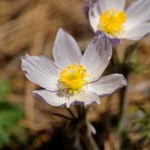Given the complexities, wickedness and messiness of contemporary protected area planning that I have described over the past several weeks, and, given the character of a new style of planning that I described, what can we do to forge an effective path to the future? What do we need to do to get there, to implement a holistic style of planning.There are three specific actions we can take that to implement holistic planning. I note here that I am referring to academics and agency personnel—there are other actions, such as dealing with institutional structures, policies and laws, that may also be required.
First, we must frame parks and protected areas as integral components of the social-ecological systems in which they are embedded. We must acknowledge that these very special places are influenced by a variety of processes, trends, stresses and events most of which occur outside their boundaries. But we do not consider those variables as exogenous—they are part of the system that affects parks. By applying systems thinking, we come to a better understanding of the leverage points that influence parks and we apply resources to those points. And by thinking in systems terms we make parks and protected areas more relevant to people at large, for those parks contain natural capital that lead to certain services (such as water purification) that ultimately provide benefits to people. This is a major re-framing of the role of parks and protected areas in society—something I will discuss in future blogs.
Second, we develop a focus on learning in our protected area practice. By this, I mean we treat management as experiments, monitor outcomes, reflect on those outcomes and change management as needed. This is not a new suggestion, many others in the field of natural resources have made similar suggestions. But to practice management as learning, we need to do more than add a checkbox on the management or planning form, we need to cultivate a culture of curiosity, reflection and critical thinking. These are values that must be deeply embedded in protected area organizations, not just used as slogans on brochures and letterheads. Embedding these values will both a while and good leadership.
Third, we develop learning platforms that enhance the technical and professional competencies needed for protected area stewardship. A learning platform would involve at least three components (1) academic instructional and research programs focusing on protected area planning and management at the undergraduate and graduate level; (2) continuing education in contemporary topics confronting protected areas based on adult learning principles; and (3) implementation of a community of practice to provide opportunities for dialogue, raise questions, construct management approaches and most importantly build confidence among managers.
With protected areas subject to a wide variety of stresses and with important recognition of their role in protecting the globe’s remaining biodiversity, we need (1) new approaches to planning and management, (2) cadres of managers holding the professional competencies required for 21st century stewardship, (3) universities providing new knowledge about how these systems operate, and (4) respect for the traditional forms of knowledge that have in large part got us here.
Subscribe to:
Post Comments (Atom)




No comments:
Post a Comment